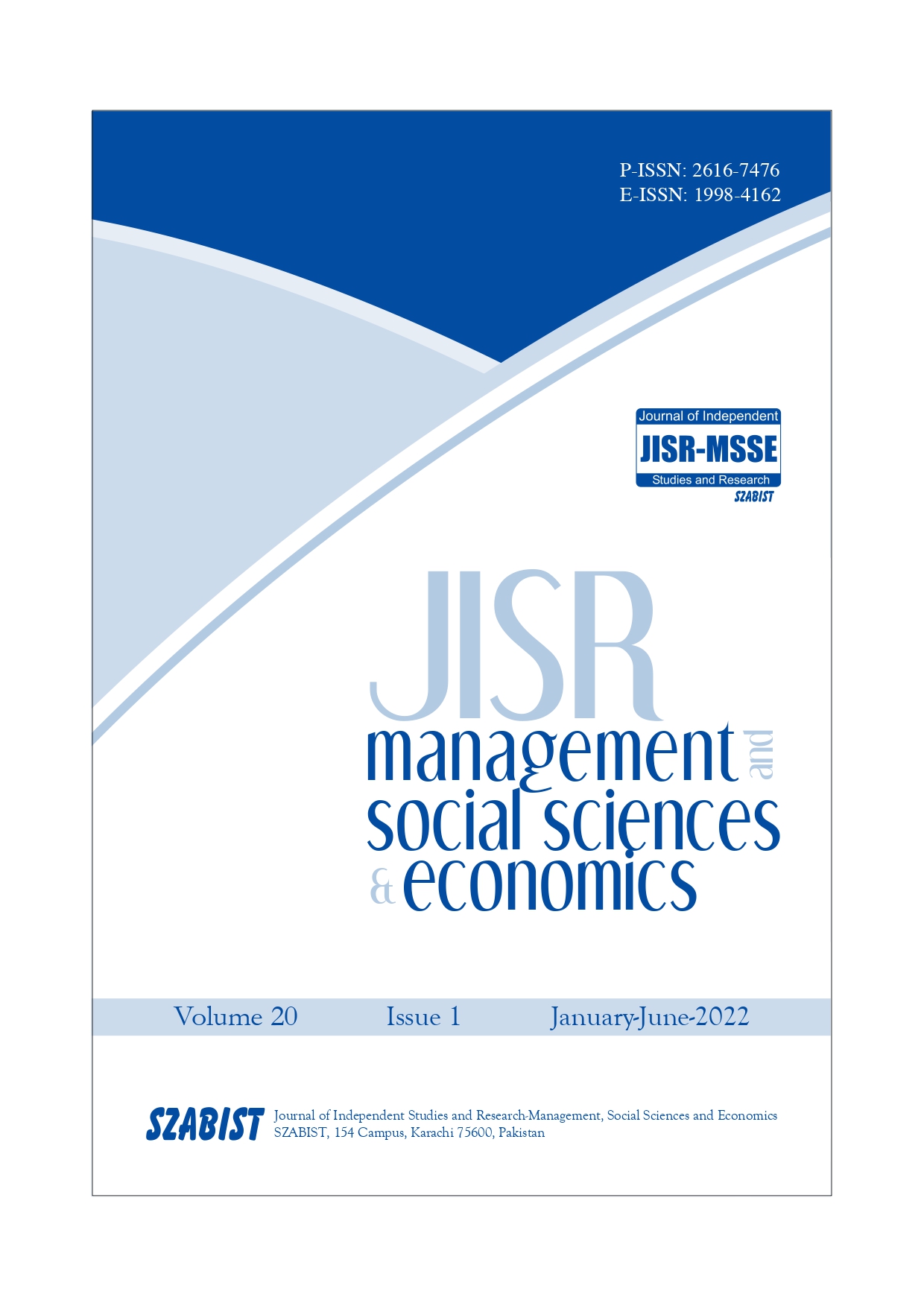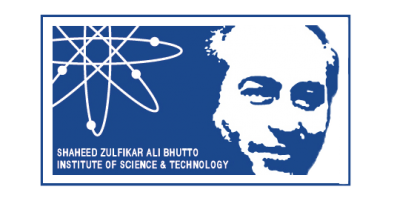Walking with the spectrum: A phenomenological study on the experiences of mothers raising an Autistic child
DOI:
https://doi.org/10.31384/jisrmsse/2022.20.1.3Keywords:
Autism, Mothers mental frameworks, StressAbstract
The purpose of this study was to explore the experiences of the mothers raising an autistic child, the struggles they faced, the misconceptions they had, the factors that altered their mental framework in effectively managing their child and their condition. 7 Detailed semi structured interviews of mothers raising a child with autism, were conducted to develop a better understanding of their situation and the factors that affected them. A phenomenological methodology was used to uncover the lived experiences of these mothers. Results revealed the existence of 7 distinct themes that provided insight into the real experience of a mother raising a child with autism. Themes focused on the mothers mental frameworks, which included denial of red flags, mother-researcher, emotional paradox, cognitive processing, indicating the thought patterns and emotional processes the mother used in dealing with her child. Moreover themes such as Family dynamics, Societal micro-aggression, medical resistance, the unspoken bond and redefining inclusion were noted for a comprehensive understanding of the experience of raising a child with Autism. The results revealed that although it seems like it is a topic well known, mothers still lack the awareness to detect signs of autism and to manage them effectively, health professionals and families need to work in collaboration to uplift the mother and child from chronic periods of distress.
Downloads
References
Altiere, M J and S Von Kluge (2008). “Family Functioning and Coping Behaviors in Parents of Children with Autism”. Journal of Child and Family Studies 18(1), pp. 83–92. https://doi.org/10.1007/s10826-008-9209-y. DOI: https://doi.org/10.1007/s10826-008-9209-y
Baron-Cohen, S, F J Scott, et al. (2009). “Prevalence of autism-spectrum conditions: UK school-based population study”. British Journal of Psychiatry 194(6), pp. 500–509. https://doi.org/10.1192/bjp.bp.108.059345. DOI: https://doi.org/10.1192/bjp.bp.108.059345
Bernier, R, A Mao, and J Yen (2010). “Psychopathology, Families, and Culture: Autism”. Child and Adolescent Psychiatric Clinics of North America 19(4), pp. 855–867. https://doi.org/10.1016/j.chc.2010.07.005. DOI: https://doi.org/10.1016/j.chc.2010.07.005
Bristol, M M, J J Gallagher, and E Schopler (1988). “Mothers and fathers of young developmentally disabled and nondisabled boys: Adaptation and spousal support”. Developmental Psychology 24(3), pp. 441–451. https://doi.org/10.1037/0012-1649.24.3.441. DOI: https://doi.org/10.1037/0012-1649.24.3.441
Carlsson, E et al. (2016). “Negotiating knowledge: parents’ experience of the neuropsychiatric diagnostic process for children with autism”. International Journal of Language & Communication Disorders 51(3), pp. 328–338. https://doi.org/10.1111/1460-6984.12210. DOI: https://doi.org/10.1111/1460-6984.12210
Daley, T C (2004). “From symptom recognition to diagnosis: children with autism in urban India”. Social Science & Medicine 58(7), pp. 330–337. https://doi.org/10.1016/s0277-9536(03)00330-7. DOI: https://doi.org/10.1016/S0277-9536(03)00330-7
Desai, M. U., Divan, G., Wertz, F. J., & Patel, V. (2012). The discovery of autism: Indian parents’ experiences of caring for their child with an autism spectrum disorder. Transcultural Psychiatry, 49(3-4), 613–637. https://doi.org/10.1177/1363461512447139 DOI: https://doi.org/10.1177/1363461512447139
Esterberg, K G (2002). “Qualitative Methods in Social Research”. In: McGraw-Hill Humanities/Social Sciences/Languages.
Farrugia, D (2009). “Exploring stigma: medical knowledge and the stigmatisation of parents of children diagnosed with autism spectrum disorder”. Sociology of Health & Illness 31(7),pp. 1011–1027. https://doi.org/10.1111/j.1467-9566.2009.01174.x. DOI: https://doi.org/10.1111/j.1467-9566.2009.01174.x
Gentles, S J et al. (2019). “Coming to understand the child has autism: A process illustrating parents’ evolving readiness for engaging in care”. Autism 24(2), pp. 470–483. https://doi.org/10.1177/1362361319874647. DOI: https://doi.org/10.1177/1362361319874647
Gill, J and P Liamputtong (2009). “‘Walk a mile in my shoes’: Researching the lived experience of mothers of children with autism”. Journal of Family Studies 15(3), pp. 309–319. https://doi.org/10.5172/jfs.15.3.309. DOI: https://doi.org/10.5172/jfs.15.3.309
Giorgi, A P and B M Giorgi (2003). “The descriptive phenomenological psychological method”. Qualitative Research in Psychology: Expanding Perspectives in Methodology and Design, pp. 243–273. https://doi.org/10.1037/10595-013. DOI: https://doi.org/10.1037/10595-013
Gobrial, E (2018). “The Lived Experiences of Mothers of Children with the Autism Spectrum Disorders in Egypt”. Social Sciences 7(8), p. 133. https://doi.org/10.3390/socsci7080133. DOI: https://doi.org/10.3390/socsci7080133
Gombosi, P G (1998). “Parents of Autistic Children”. The Psychoanalytic Study of the Child 53(1), pp. 254–275. https://doi.org/10.1080/00797308.1998.11822486. DOI: https://doi.org/10.1080/00797308.1998.11822486
Howlin, P and A Moore (1997). “Diagnosis in Autism”. Autism 1(2), pp. 135–162. https://doi.org/10.1177/1362361397012003. DOI: https://doi.org/10.1177/1362361397012003
Kanner, L (1943). “The Autistic Child”. The Journal of Nervous and Mental Disease 152(5), pp. 369–370. https://doi.org/10.1097/00005053-197105000-00012. DOI: https://doi.org/10.1097/00005053-197105000-00012
Kanzer, M (1983). “Papers on psychoanalysis By Hans W. Loewald.” Journal of the American Psychoanalytic Association 31(1), pp. 261–271. https://doi.org/10.1177/000306518303100113. DOI: https://doi.org/10.1177/000306518303100113
Keenan, M et al. (2010). “The Experiences of Parents During Diagnosis and Forward Planning for Children with Autism Spectrum Disorder”. Journal of Applied Research in Intellectual Disabilities 23(4), pp. 390–397. https://doi.org/10.1111/j.1468-3148.2010.00555.x. DOI: https://doi.org/10.1111/j.1468-3148.2010.00555.x
Kendall, T et al. (2013). “Management of autism in children and young people: summary of NICE and SCIE guidance”. BMJ 347(aug28 2), f4865. https://doi.org/10.1136/bmj.f4865. DOI: https://doi.org/10.1136/bmj.f4865
Khalid, M et al. (2020). “Genetic Risk of Autism Spectrum Disorder in a Pakistani Population”. Genes 11(10), p. 1206. https://doi.org/10.3390/genes11101206. DOI: https://doi.org/10.3390/genes11101206
Kleinman, J M et al. (2008). “The Modified Checklist for Autism in Toddlers: A Follow-up Study Investigating the Early Detection of Autism Spectrum Disorders”. Journal of Autism and Developmental Disorders 38(5), pp. 827–839. https://doi.org/10.1007/s10803-007-0450-9. DOI: https://doi.org/10.1007/s10803-007-0450-9
Knapp, M, R Romeo, and J Beecham (2009). “Economic cost of autism in the UK”. Autism 13(3), pp. 317–336. https://doi.org/10.1177/1362361309104246. DOI: https://doi.org/10.1177/1362361309104246
Landsman, G (2003). “Emplotting children’s lives: developmental delay vs. disability”. Social Science & Medicine 56(9), pp. 1947–1960. https://doi.org/10.1016/s0277-9536(02)00215-0. DOI: https://doi.org/10.1016/S0277-9536(02)00215-0
Lappé, M et al. (2018). “The Diagnostic Odyssey of”. Autism Spectrum Disorder. Pediatrics 141(Supplement 4), S272–S279. https://doi.org/10.1542/peds.2016-4300c. DOI: https://doi.org/10.1542/peds.2016-4300C
Latzer, I Tokatly, Y Leitner, and O Karnieli-Miller (2021). “Core experiences of parents of children with autism during the COVID-19 pandemic lockdown”. Autism 25(4),pp. 1047–1059. https://doi.org/10.1177/1362361320984317. DOI: https://doi.org/10.1177/1362361320984317
Link, B G and J C Phelan (2006). “Stigma and its public health implications”. The Lancet 367(9509), pp. 528–529. https://doi.org/10.1016/s0140-6736(06)68184-1. DOI: https://doi.org/10.1016/S0140-6736(06)68184-1
Mansell, W and K Morris (2004). “A survey of parents’ reactions to the diagnosis of an autistic spectrum disorder by a local service”. Autism 8(4), pp. 387–407. https://doi.org/10.1177/1362361304045213. DOI: https://doi.org/10.1177/1362361304045213
Nadesan, M H (2005). “Constructing Autism: Unravelling the ‘truth’ and understanding the social (1st ed.).” In: Routledge.
Rahman, A, A Malik, et al. (2008). “Cognitive behaviour therapy-based intervention by community health workers for mothers with depression and their infants in rural Pakistan: a cluster-randomised controlled trial”. The Lancet 372(9642), pp. 902–909. https://doi.org/10.1016/s0140-6736(08)61400-2. DOI: https://doi.org/10.1016/S0140-6736(08)61400-2
Rapp, R and F Ginsburg (2001). “Enabling Disability: Rewriting Kinship, Reimagining Citizenship”. Public Culture 13(3), pp. 533–556. https://doi.org/10.1215/08992363-13-3-533. DOI: https://doi.org/10.1215/08992363-13-3-533
Reed, P and L A Osborne (2018). “Reaction to diagnosis and subsequent health in mothers of children with autism spectrum disorder”. Autism 23(6), pp. 1442–1448. https://doi.org/10.1177/1362361318815641. DOI: https://doi.org/10.1177/1362361318815641
Russell, G, T Ford, et al. (2010). “Identification of children with the same level of impairment as children on the autistic spectrum, and analysis of their service use”. Journal of Child Psychology and Psychiatry 51(6), pp. 643–651. https://doi.org/10.1111/j.1469-7610.2010.02233.x. DOI: https://doi.org/10.1111/j.1469-7610.2010.02233.x
Russell, G and B Norwich (2012). “Dilemmas, diagnosis and de-stigmatization: Parental perspectives on the diagnosis of autism spectrum disorders”. Clinical Child Psychology and Psychiatry 17(2), pp. 229–245. https://doi.org/10.1177/1359104510365203. DOI: https://doi.org/10.1177/1359104510365203
Taylor, G R (2005). “Integrating Quantitative and Qualitative Methods in Research ”. In: University Press Of America.
Wang, F et al. (2018). “The prevalence of autism spectrum disorders in China: a comprehensive meta-analysis”. International Journal of Biological Sciences 14(7), pp. 717–725. https://doi.org/10.7150/ijbs.24063. DOI: https://doi.org/10.7150/ijbs.24063
Weiss, J A, A Wingsiong, and Y Lunsky (2013). “Defining crisis in families of individuals with autism spectrum disorders”. Autism 18(8), pp. 985–995. DOI: https://doi.org/10.1177/1362361313508024
Weisz, J R, M A Mccabe, and M D Dennig (1994). “Primary and secondary control among children undergoing medical procedures: Adjustment as a function of coping style”. Journal of Consulting and Clinical Psychology 62(2), pp. 324–332. https://doi.org/10.1037/0022-006x.62.2.324. DOI: https://doi.org/10.1037/0022-006X.62.2.324
Wilcock, A A (2002). “Reflections on doing, being and becoming ”. Australian Occupational Therapy Journal 46(1), pp. 1–11. https://doi.org/10.1046/j.1440-1630.1999.00174.x. DOI: https://doi.org/10.1046/j.1440-1630.1999.00174.x
Wing, L and D Potter (2002). “The epidemiology of autistic spectrum disorders: is the prevalence rising?” Mental Retardation and Developmental Disabilities Research Reviews 8(3), pp. 151–161. https://doi.org/10.1002/mrdd.10029. DOI: https://doi.org/10.1002/mrdd.10029
YouTube (2007). In My Language. https://www.youtube.com/watch?v=JnylM1hI2jc.
Published
How to Cite
Issue
Section
License
Copyright (c) 2022 Navira Ali Akhai, Mudassar Aziz , Gulnaz Anjum

This work is licensed under a Creative Commons Attribution 4.0 International License.
Copyright: The Authors















